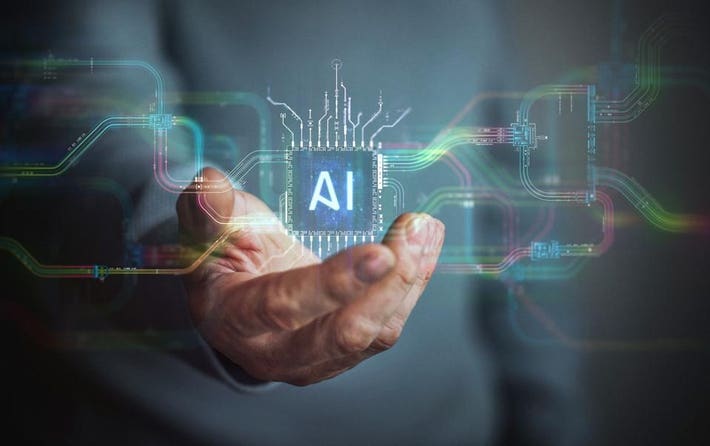In today’s fast-paced world, the integration of Artificial Intelligence (AI) into various sectors is no longer a futuristic concept but a reality. One such sector that is witnessing a significant transformation is the HVAC (Heating, Ventilation, and Air Conditioning) industry. The incorporation of AI in HVAC systems is changing the way we approach maintenance and efficiency, with hvac anomaly detection with ai leading the charge.

Understanding HVAC Anomalies
Anomalies in HVAC systems can lead to inefficiencies, increased energy consumption, and even system failures. These anomalies can stem from various sources such as sensor malfunctions, wear and tear, or unexpected operational behaviors. Identifying and rectifying these anomalies promptly is crucial for maintaining system efficiency and longevity.
The Role of AI in Anomaly Detection
AI technologies have revolutionized the way anomalies are detected in HVAC systems. By utilizing machine learning algorithms, AI can monitor and analyze vast amounts of data from HVAC systems to identify patterns that indicate potential issues. This proactive approach not only helps in maintaining optimal performance but also in significantly reducing operational costs.
Enhanced Predictive Maintenance
One of the primary benefits of integrating AI into HVAC systems is the enhancement of predictive maintenance. AI can predict potential failures before they occur by analyzing historical data and identifying trends. This capability allows for timely maintenance, preventing costly breakdowns and extending the life of HVAC equipment.
Real-Time Monitoring and Diagnostics
AI enables real-time monitoring and diagnostics of HVAC systems. With the ability to continuously analyze data, AI can detect anomalies as they happen, ensuring that issues are addressed immediately. This real-time capability is crucial for maintaining system efficiency and preventing unexpected downtimes. Discover more about real-time diagnostics solutions.
AI-Powered Airflow Analysis
Airflow analysis is a critical aspect of HVAC performance. AI can optimize airflow by analyzing data and adjusting system parameters in real-time. This leads to improved energy efficiency and enhanced indoor air quality. Learn how AI enhances airflow analysis.
Reducing Energy Consumption
By identifying inefficiencies and optimizing system performance, AI helps in significantly reducing energy consumption. This not only results in cost savings but also contributes to environmental sustainability, aligning with global efforts to reduce carbon footprints.
The Impact of AI on HVAC System Design
AI is not only transforming the operation of HVAC systems but also influencing their design. With data-driven insights, designers can create systems that are more efficient and tailored to specific environments. This approach leads to better-performing HVAC systems that meet the unique needs of different settings.
Integration with Smart Technologies
The integration of AI with smart technologies is paving the way for smarter HVAC systems. These systems can communicate with other smart devices, creating a cohesive and efficient building management solution.
Overcoming Challenges in HVAC AI Implementation
While the benefits of AI in HVAC are clear, there are challenges that need to be addressed. These include the initial cost of implementation, the need for skilled personnel to manage AI systems, and concerns over data privacy and security.
Addressing Skill Gaps
To fully leverage AI in HVAC systems, there is a need for skilled professionals who understand both HVAC systems and AI technologies. Investing in training and development is crucial to bridge this skill gap and ensure successful AI integration.
Ensuring Data Security
As with any technology that relies on data, ensuring the security and privacy of data is paramount. Implementing robust security measures is essential to protect sensitive information and maintain trust in AI-driven HVAC solutions.
The Future of HVAC with AI
As AI continues to evolve, its impact on the HVAC industry will only grow. Future advancements are expected to bring even more sophisticated anomaly detection capabilities, further enhancing system efficiency and reliability. Explore how AI is transforming HVAC.
Adapting to Technological Advancements
The HVAC industry must remain adaptable and open to technological advancements. By embracing AI, businesses can stay ahead of the curve and ensure they are providing the best possible solutions to their clients.
Conclusion
The integration of AI in HVAC anomaly detection is a game-changer for the industry. It offers numerous benefits, from enhanced predictive maintenance and real-time monitoring to energy savings and improved system design. While challenges exist, the potential rewards make AI a worthwhile investment for any forward-thinking HVAC business.

Frequently Asked Questions (FAQ)
What is HVAC anomaly detection with AI?
HVAC anomaly detection with AI involves using artificial intelligence to monitor and identify irregularities in HVAC systems. This proactive approach helps in maintaining system efficiency and preventing potential failures.
How does AI improve predictive maintenance in HVAC systems?
AI improves predictive maintenance by analyzing historical data and identifying trends that indicate possible future failures. This allows for timely interventions, preventing costly breakdowns and extending equipment lifespan.
What are the challenges of implementing AI in HVAC systems?
Challenges include the initial cost of implementation, the need for skilled personnel, and data privacy concerns. Addressing these challenges is crucial for successful AI integration in HVAC systems.
This article contains affiliate links. We may earn a commission at no extra cost to you.
